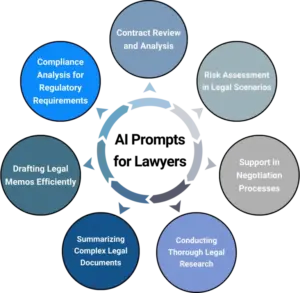Establishing a solid foundation for cooperation is essential for successful partnerships. A Memorandum of Understanding (MOU) serves as a key initial step in creating this foundation. A Memorandum of Understanding is a formal, yet non-binding, document that clarifies the objectives, roles, and expectations of all parties involved. It helps foster mutual understanding and guides future negotiations. While it doesn’t impose legal obligations, an MOU reflects each party’s intent to collaborate toward a shared goal, setting the stage for potential legally binding contracts.
This guide explores how to effectively draft and utilize a Memorandum of Understanding in professional settings. From outlining essential components to avoiding common drafting pitfalls, you’ll learn the art of creating clear, functional MOUs. By mastering these strategies, you can strengthen collaborations and pave the way for successful partnerships. Read on to unlock the full potential of MOUs in your endeavors.
Understanding the Fundamentals of MOUs
A memorandum of understanding is an official paper that shows the main points of an agreement between two or more groups, indicating an intended common line of action. It acts as a beginning for talks, helping to explain the main goals, duties, and timelines before any legal obligations are made. While a Memorandum of Understanding is not legally binding, it is important because it shows a strong intent to follow through with the idea.
A Memorandum of Understanding shows that people want to work together. It is a way to show good faith and a desire to reach a common goal. The MOU sets the stage for future talks and deals. It helps build trust and openness between everyone involved.
Defining Memorandum of Understanding and Its Purpose
A memorandum of understanding, or Memorandum of Understanding, is a legal document. It explains the terms of an agreement between two or more parties. This document is often used when a legally binding contract is not needed yet. It can be helpful during early talks or in dealing with complex international partnerships.
The purpose of a Memorandum of Understanding is to create a clear understanding and shared vision for everyone involved. It includes basics like the agreement’s scope, what each party is responsible for, and the timeline for completing the agreement. An MOU can also lead to a more formal agreement, such as a letter of intent or a binding contract.
A Memorandum of Understanding is not usually a legal contract, but it is very important. It shows that all involved care about the project. This agreement can help lead to a stronger deal later. It also makes sure everyone understands each other.
Related Article: Best Contract Management Software: Top 10 CLM in 2024
Essential Elements to Include in a Memorandum of Understanding

A good MOU is clear and short, with no confusion. It should be written together, so everyone can share their thoughts and worries. By tackling possible issues from the start, a strong Memorandum of Understanding reduces the chances of misunderstandings and problems later on.
Involving a lawyer while writing the MOU is very important. This ensures that the Memorandum of Understanding clearly shows what everyone wants and follows the law. This step matters even more for MOUs that include international partnerships or complicated business deals.
A clear memorandum of understanding should have certain key parts. This will help everyone involved to understand each other better. It is important for achieving mutual understanding and clarity among the parties.
- Parties Involved: List all the people or groups taking part in the agreement. Include their legal names and how to contact them.
- Purpose of the MOU: Explain what the cooperative agreement is for and what goals the collaboration aims to achieve.
- Scope of Work: Describe what the agreement covers, including the exact activities, services, or products that will be done.
- Roles and Responsibilities: Clearly state what each party will do and what each one brings to the project or the cooperation.
- Timeline: Set a realistic timeline for reaching important goals and deliverables. Include start and end dates for different parts of the agreement.
It’s important to know that a Memorandum of Understanding is not a legally binding contract. However, it shows that everyone is committed to working together towards a shared goal. By including these key parts, the document becomes more effective. It reduces misunderstandings and helps create better teamwork.
Setting Clear Objectives and Roles
One main reason for a memorandum of understanding (MOU) is to create mutual understanding between all parties. It should clearly explain the common line of action and the goals of the collaboration. The Memorandum of Understanding needs to define the shared objectives. This way, everyone knows the ultimate goal.
It is very important to have clarity about what each party needs to do. This will help avoid confusion and encourage responsibility. The Memorandum of Understanding should clearly describe the tasks and contributions expected from everyone involved. It should list specific duties, areas they are skilled in, and who makes the decisions.
The Memorandum of Understanding brings clarity to the agreement. This helps everyone work together better and lowers the chance of misunderstandings. It also helps achieve the goals set in the agreement. With this clarity, all parties have a common vision. They understand their roles in making that vision happen.
Related Article: Top 10 Negotiated Clauses You Should be Aware Of
Navigating MOU Contract Challenges and Solutions
Even though a Memorandum of Understanding has benefits, making and signing them can be difficult. A key problem is not clearly stating the terms and what is expected. This can cause arguments later. Another issue is missing the possible legal effects, thinking that the MOU offers full protection.
These challenges can be easily handled by planning and talking with each other. Clearly explaining the purpose, scope, and roles in the Memorandum of Understanding helps everyone understand and reduces the chance of confusion. Also, getting advice from a lawyer makes sure the document is solid and protects everyone’s interests.
Overcoming Common Pitfalls in Memorandum of Understanding Agreement Drafting
Crafting a good Memorandum of Understanding template takes careful thought to avoid mistakes that might harm its purpose. A common error is thinking that an MOU is a binding agreement. This mistake can cause misunderstandings and issues later on. While a Memorandum of Understanding shows a commitment to a common line of action, you need to keep in mind that it is not the same as an enforceable contract.
One mistake is not having a clear way to solve disputes. Problems can happen even when everyone means well. Without a set process to fix these issues, misunderstandings can grow and harm teamwork. By having a clear plan that everyone agrees on, the parties can quickly and easily deal with issues. This way, nothing can derail the whole agreement.
One should avoid unclear language. It is important to be specific when stating the roles and responsibilities of each party. Being vague can lead to misunderstandings. This may cause conflicts later.
Ensuring Clarity and Mutual Understanding
Clarity is very important for any successful agreement, and this includes drafting a Memorandum of Understanding. It is key that everyone involved understands the text. The words used should be clear, simple, and easy to understand. Avoid using complicated legal terms. These can confuse people and make the agreement less effective.
Everyone needs to agree during the drafting process. One party may start by suggesting the Memorandum of Understanding, but all groups must join in to help create the terms of the agreement. Open communication is key. It helps make sure everyone’s needs and expectations are met. This leads to a good outcome for all involved.
It is important to remember that an MOU shows the acceptance of an offer. Though it may not be a legally binding contract, it still serves as an agreement to work together towards a shared goal, unlike a casual gentlemen’s agreement. So, everyone must understand and agree to the terms in the MOU. This understanding helps build a successful and productive partnership.
MOU vs. MOA: Identifying the Differences
|
Aspect |
MOU (Memorandum of Understanding) |
MOA (Memorandum of Agreement) |
|
Formality |
MOUs are generally less formal, serving as preliminary agreements between parties. |
MOAs are more formal documents that outline specific agreements and are often used when a binding commitment is desired. |
|
Binding Nature |
An MOU is typically non-binding, indicating the intent to collaborate without legal obligations. |
An MOA is usually legally binding, establishing enforceable commitments between the parties involved. |
|
Purpose |
The primary purpose of an MOU is to outline mutual intentions and general agreements. |
An MOA focuses on detailing specific terms, obligations, and conditions that parties must adhere to. |
|
Content |
MOUs generally include broad objectives, roles, and responsibilities of the parties. |
MOAs contain precise commitments, timelines, and performance criteria that must be met. |
|
Legal Enforceability |
MOUs offer limited legal recourse if disputes arise due to their non-binding nature. |
MOAs provide clear legal recourse in case of non-compliance or breach of agreement. |
|
Use Cases |
Commonly used for initial discussions, informal collaborations, or understanding mutual interests. |
Typically employed in formal agreements, detailed partnerships, and when specific obligations are required. |
This table illustrates the key distinctions between MOUs and MOAs, helping you understand their specific characteristics and appropriate applications in various contexts.
Related Article: Mastering Business Agreements: Essential Guide
How Volody Simplifies MOU Drafting and Management

Volody’s software solutions can significantly streamline the drafting, review, and management process of Memorandums of Understanding (MOUs) by providing features tailored for efficient and compliant document handling. Here are a few ways Volody can enhance the MOU process:
- Template Standardization: Volody offers customizable templates to streamline the MOU drafting process, ensuring consistency and adherence to legal standards, and reducing the time needed to create MOUs from scratch.
- Collaboration Tools: Volody enables seamless collaboration with stakeholders. Multiple users can access and edit the MOU simultaneously, helping parties align on goals and terms with ease.
- Automated Approval Workflows: Set up workflows for quick approvals, reducing bottlenecks and speeding up the MOU finalization process. Volody’s automated notifications keep all relevant parties informed about the status of the document.
- Version Control: Volody’s version control ensures that all parties are working on the most current version of the MOU. This helps avoid miscommunications and keeps a record of any revisions.
- Compliance and Clause Libraries: Volody’s clause library helps ensure that MOUs include all required legal clauses and meet compliance requirements, reducing the risk of oversights and legal vulnerabilities.
- E-Signature Integration: With e-signature capabilities integrated, Volody simplifies the signing process, enabling parties to sign MOUs securely from anywhere, at any time.
- Audit Trail and Document Security: Volody maintains a secure audit trail for every MOU, providing transparency and accountability throughout the document lifecycle, which is essential in both domestic and international partnerships.
- Data and Analytics: Track the status, turnaround times, and other key metrics for MOUs with Volody’s reporting and analytics. This data provides insights for optimizing future agreements.
By using Volody for your MOU process, organizations can ensure efficiency, compliance, and secure collaboration, ultimately fostering stronger partnerships and smoother agreements.
Related Article: What is Privacy disclosure agreement? A Comprehensive guide
Conclusion
Mastering Memorandums of Understanding (MOUs) is very important for working well together. First, it helps to know the differences between MOUs and MOAs. You also need to set clear goals and include important parts in your agreements. Solving problems with writing and making sure both sides understand each other are essential for the success of an MOU. Clarity is very important. Often-asked questions can help you learn more. Whether you are new to MOUs or want to know more, learning these agreements will improve your work with others. Start mastering MOUs today to work better together.







